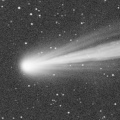
|
It approached to Sun down to 0.23 a.u. and brightened up to 2.5 mag in mid September (Sept. 18, Juan Jose Gonzalez). Now it is 4.5 mag (Sept. 23, Willian Souza). Fading rapidly. Now it is not observable. It will appear soon in the Southern Hemisphere, or in November in the Northern Hemisphere.
Date(TT) R.A. (2000) Decl. Delta r Elong. m1 Best Time(A, h)
Sept.30 12 56.79 -13 28.1 1.373 0.466 13 6.4 19:10 ( 85,-18)
Oct. 7 12 56.65 -19 10.5 1.563 0.641 14 8.0 19:00 ( 82,-24)
|
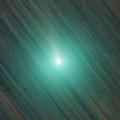
|
Now it is 8.0 mag (Sept. 29, Virgilio Gonano). It will fade out rapidly after this. In the Northern Hemisphere, it stays observable in good condition. In the Southern Hemisphere, it will be getting higher gradually.
Date(TT) R.A. (2000) Decl. Delta r Elong. m1 Best Time(A, h)
Sept.30 6 25.04 32 0.6 0.384 1.078 90 7.9 4:29 (274, 73)
Oct. 7 7 3.66 25 56.3 0.393 1.067 88 7.7 4:35 (289, 69)
|
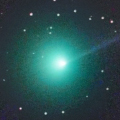
|
It will brighten up to 7.5 mag in October. Now it is 9.4 mag (Sept. 28, Marek Biely). It will fade out rapidly after this. In the Northern Hemisphere, it will be unobservable soon. In the Southern Hemisphere, it will never be observable after this.
Date(TT) R.A. (2000) Decl. Delta r Elong. m1 Best Time(A, h)
Sept.30 10 10.76 19 49.3 0.916 0.651 39 8.8 4:29 (260, 22)
Oct. 7 11 6.06 11 54.0 0.978 0.523 30 8.3 4:35 (264, 13)
|

|
Now it is 9.9 mag (Sept. 24, Juan Jose Gonzalez). Fading gradually. In the Northern Hemisphere, it will be unobservable in January. In the Southern Hemisphere, it stays observable in good condition.
Date(TT) R.A. (2000) Decl. Delta r Elong. m1 Best Time(A, h)
Sept.30 1 38.14 -31 7.9 1.903 2.762 141 9.8 1:07 ( 0, 24)
Oct. 7 1 17.69 -34 49.3 1.972 2.807 139 10.0 0:19 ( 0, 20)
|
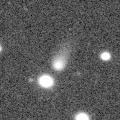
|
It is expected to brighten up to 7 mag in early 2024. Now it is 12.9 mag (Sept. 14, Thomas Lehmann). It will brighten rapidly after this. In the Northern Hemisphere, it is not observable now, but it will appear in November. It locates somewhat low in the Southern Hemisphere. But it will become high in winter. The brightness evolution slowed down since May.
Date(TT) R.A. (2000) Decl. Delta r Elong. m1 Best Time(A, h)
Sept.30 9 59.95 -32 14.4 2.940 2.339 44 11.0 4:29 (305, -7)
Oct. 7 10 17.41 -33 21.5 2.860 2.266 44 10.8 4:35 (308, -5)
|

|
It brightened very rapidly. It will approach to Earth down to 0.2 a.u. in November, and it is expected to brighten up to 7.5 mag. Now it is 11.9 mag (Sept. 24, Ken-ichi Kadota). It will turn to fade out rapidly after brightening. In the Northern Hemisphere, it will be unobservable in January. But it will be observable again in October. In the Southern Hemisphere, it is not observable now, but it will appear in November.
Date(TT) R.A. (2000) Decl. Delta r Elong. m1 Best Time(A, h)
Sept.30 11 59.82 44 53.8 1.400 1.036 47 11.9 4:29 (225, 15)
Oct. 7 12 8.01 45 46.0 1.205 0.980 51 11.3 4:35 (227, 19)
|

|
It brightened up to 7.8 mag in late July (July 20, Thomas Lehmann). Now it is 11.5 mag (Sept. 9, Chris Wyatt). Fading gradually. It will be unobservable soon. But it will be observable again in November in the Northern Hemisphere, or in December in the Southern Hemisphere.
Date(TT) R.A. (2000) Decl. Delta r Elong. m1 Best Time(A, h)
Sept.30 14 52.92 -13 32.5 2.370 1.706 38 11.7 19:10 ( 69, 6)
Oct. 7 14 54.56 -12 50.2 2.520 1.755 32 12.0 19:00 ( 72, 3)
|
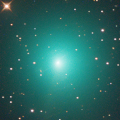
|
It brightened up to 8.4 mag in late July (July 22, Thomas Lehmann). Now it is 12.4 mag (Sept. 24, Ken-ichi Kadota). Fading rapidly. It will be fainter than 18 mag in December. It stays observable in good condition.
Date(TT) R.A. (2000) Decl. Delta r Elong. m1 Best Time(A, h)
Sept.30 22 23.16 -19 50.0 0.836 1.744 143 12.0 21:48 ( 0, 35)
Oct. 7 22 28.73 -22 15.6 0.966 1.824 136 12.7 21:26 ( 0, 33)
|

|
It brightened up to 8 mag from 2022 summer to 2023 spring. Now it is 11.6 mag (Sept. 24, Osamu Miyazaki). It stays 13 mag for a while. It stays observable in good condition.
Date(TT) R.A. (2000) Decl. Delta r Elong. m1 Best Time(A, h)
Sept.30 6 50.36 -8 15.9 3.770 3.779 82 12.0 4:29 (324, 40)
Oct. 7 6 49.42 -8 17.4 3.727 3.842 88 12.1 4:35 (334, 43)
|

|
Now it is 12.7 mag (Oct. 1, Taras Prystavski). It will fade out rapidly after this. In the Northern Hemisphere, it will be getting higher gradually. It locates somewhat low in the Southern Hemisphere.
Date(TT) R.A. (2000) Decl. Delta r Elong. m1 Best Time(A, h)
Sept.30 15 58.22 -5 54.2 1.334 1.097 53 13.0 19:10 ( 64, 23)
Oct. 7 16 25.95 -5 52.3 1.294 1.076 54 12.9 19:00 ( 62, 25)
|

|
Now it is 13.7 mag (July 14, Chris Wyatt). It stays 13 mag for a while. In the Northern Hemisphere, it is not observable now, but it will be observable soon. In the Southern Hemisphere, it will be getting higher gradually.
Date(TT) R.A. (2000) Decl. Delta r Elong. m1 Best Time(A, h)
Sept.30 10 42.53 -20 53.1 4.812 3.983 30 13.1 4:29 (290, -8)
Oct. 7 10 44.06 -22 17.0 4.792 4.009 34 13.1 4:35 (295, -3)
|
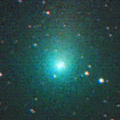
|
It brightened up to 9.5 mag from last winter to early spring (Jan. 30, Katsumi Yoshimoto). Now it is 12.8 mag (Sept. 18, Chris Wyatt). It will fade out rapidly after this. It stays observable in good condition.
Date(TT) R.A. (2000) Decl. Delta r Elong. m1 Best Time(A, h)
Sept.30 23 2.33 2 43.1 2.264 3.223 159 13.3 22:26 ( 0, 58)
Oct. 7 22 54.02 -0 8.5 2.378 3.288 150 13.6 21:51 ( 0, 55)
|
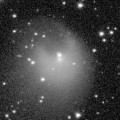
|
It returns for the first time in 70 years. It will brighten up to 4.5 mag in 2024 spring. It suddenly brightened in outburst by 5 mag up to 11.5 mag on July 20 (E. Tamas, Francois Kugel). Now it is 11.9 mag (Sept. 11, Katsumi Yoshimoto). It will brighten rapidly after this. In the Northern Hemisphere, it stays observable in good condition. In the Southern Hemisphere, it is not observable now.
Date(TT) R.A. (2000) Decl. Delta r Elong. m1 Best Time(A, h)
Sept.30 17 19.78 47 3.0 3.111 3.118 81 13.3 19:10 (125, 60)
Oct. 7 17 22.35 45 48.4 3.066 3.039 79 13.4 19:00 (122, 58)
|

|
The ATLAS search program detected its cometary activity in April. It continues to be brightening even after the perihelion passage. Now it is 13.4 mag (Sept. 17, Ken-ichi Kadota). It will fade out rapidly after this. It will be fainter than 18 mag in January. In the Southern Hemisphere, it stays observable in good condition.
Date(TT) R.A. (2000) Decl. Delta r Elong. m1 Best Time(A, h)
Sept.30 23 38.31 -26 54.3 2.200 3.100 148 13.7 23:03 ( 0, 28)
Oct. 7 23 35.31 -26 23.8 2.271 3.134 143 13.8 22:32 ( 0, 29)
|

|
It brightened up to 8.3 mag in 2021-2022 winter (Jan. 6, 2022, Toshiyuki Takahashi). Now it is 13.2 mag (July 14, Chris Wyatt). It stays 14 mag for a while. In the Northern Hemisphere, it is not observable now, but it will appear in November. In the Southern Hemisphere, it will be getting higher gradually.
Date(TT) R.A. (2000) Decl. Delta r Elong. m1 Best Time(A, h)
Sept.30 10 47.28 -36 54.4 7.153 6.429 40 13.7 4:29 (303,-18)
Oct. 7 10 52.48 -37 46.3 7.184 6.474 41 13.7 4:35 (307,-13)
|
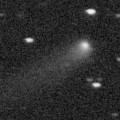
|
Now it is 13.9 mag (Sept. 17, Taras Prystavski). Fading slowly. In the Northern Hemisphere, it stays observable in good condition. In the Southern Hemisphere, it will be getting lower gradually after this, and it will be unobservable in January.
Date(TT) R.A. (2000) Decl. Delta r Elong. m1 Best Time(A, h)
Sept.30 0 26.78 6 16.8 2.447 3.447 176 13.8 23:49 ( 0, 61)
Oct. 7 0 8.61 5 44.0 2.481 3.470 170 13.9 23:04 ( 0, 61)
|

|
Now it is 13.4 mag (Sept. 16, Chris Wyatt). It stays 14 mag for a while. In the Northern Hemisphere, it is not observable now. In the Southern Hemisphere, it stays observable in good condition. It was expected to brighten up to 10 mag from spring to summer. However, it was fainter than originally expected.
Date(TT) R.A. (2000) Decl. Delta r Elong. m1 Best Time(A, h)
Sept.30 11 49.09 -75 27.2 3.529 3.377 73 13.8 4:29 (342,-37)
Oct. 7 11 53.93 -76 0.6 3.593 3.406 71 13.9 4:35 (343,-35)
|

|
Now it is 14.7 mag (Sept. 18, Hidenori Nohara). In the Northern Hemisphere, it stays observable in good condition. It locates somewhat low in the Southern Hemisphere.
Date(TT) R.A. (2000) Decl. Delta r Elong. m1 Best Time(A, h)
Sept.30 8 28.91 21 37.6 6.546 6.140 62 14.0 4:29 (272, 43)
Oct. 7 8 32.40 21 23.7 6.445 6.142 68 14.0 4:35 (277, 49)
|
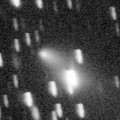
|
Now it is 13.4 mag (Sept. 15, Masayoshi Yoshimi). It will fade out rapidly after this. In the Northern Hemisphere, it stays observable in good condition. In the Southern Hemisphere, it will never be observable after this.
Date(TT) R.A. (2000) Decl. Delta r Elong. m1 Best Time(A, h)
Sept.30 2 10.89 63 32.3 1.292 1.950 115 14.1 1:40 (180, 61)
Oct. 7 1 49.44 66 34.4 1.313 1.986 117 14.3 0:52 (180, 58)
|
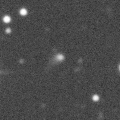
|
Now it is 15.6 mag (July 8, Thomas Lehmann). Brightening slowly. It will be getting higher gradually. It is expected to brighten up to 12 mag from 2024 to 2025.
Date(TT) R.A. (2000) Decl. Delta r Elong. m1 Best Time(A, h)
Sept.30 9 37.57 4 12.8 5.479 4.780 41 14.4 4:29 (279, 19)
Oct. 7 9 39.55 4 23.8 5.351 4.742 48 14.3 4:35 (284, 26)
|
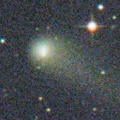
|
It brightened up to 11.1 mag in early 2022 (Mar. 31, 2022, F. Kugel, J.-G. Bosch, J. Nicolas). Now it is 14.0 mag (Sept. 22, S. Shurpakov). It stays 15 mag for a while. It locates somewhat low in the Northern Hemisphere. But it will become high in winter. In the Southern Hemisphere, it will be unobservable soon.
Date(TT) R.A. (2000) Decl. Delta r Elong. m1 Best Time(A, h)
Sept.30 15 44.60 17 4.8 6.279 5.739 53 14.5 19:10 ( 88, 34)
Oct. 7 15 49.73 16 44.6 6.368 5.775 49 14.6 19:00 ( 89, 31)
|
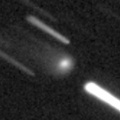
|
Now it is 14.9 mag (Sept. 18, Ken-ichi Kadota). Brightening slowly. It will be unobservable soon in the Southern Hemisphere, or in November in the Northern Hemisphere. But it will be observable again in December. It is expected to brighten up to 12.5 mag in 2024 spring. At the high light, it will be observable in excellent condition in the Southern Hemisphere, but it will be low in the Northern Hemisphere.
Date(TT) R.A. (2000) Decl. Delta r Elong. m1 Best Time(A, h)
Sept.30 15 7.69 -0 32.3 3.867 3.183 41 14.7 19:10 ( 77, 16)
Oct. 7 15 8.39 -1 57.5 3.911 3.146 35 14.7 19:00 ( 79, 12)
|

|
It will brighten up to 14 mag from 2024 to 2025. Now it is 15.2 mag (July 22, ATLAS Chile). It stays 15 mag for a while. In the Northern Hemisphere, it is not observable now, but it will appear in November. In the Southern Hemisphere, it will be getting higher gradually.
Date(TT) R.A. (2000) Decl. Delta r Elong. m1 Best Time(A, h)
Sept.30 10 54.71 -29 18.1 6.437 5.635 34 15.1 4:29 (296,-15)
Oct. 7 11 1.58 -29 48.5 6.398 5.611 35 15.0 4:35 (299,-11)
|

|
It brightened up to 11.8 mag in summer (June 17, Osamu Miyazaki). Now it is 15.4 mag (Sept. 21, S. Shurpakov). It will fade out rapidly after this. It will be fainter than 18 mag in December. In the Northern Hemisphere, it stays observable in good condition. In the Southern Hemisphere, it will be getting lower gradually.
Date(TT) R.A. (2000) Decl. Delta r Elong. m1 Best Time(A, h)
Sept.30 19 48.21 -2 21.9 1.699 2.262 111 15.2 19:14 ( 0, 53)
Oct. 7 19 55.43 -2 41.9 1.794 2.287 106 15.5 19:00 ( 3, 52)
|

|
It will turn to fade out rapidly after brightening. It will be fainter than 18 mag in January. It will be unobservable soon in the Northern Hemisphere, or in November in the Southern Hemisphere. But it will be observable again in November.
Date(TT) R.A. (2000) Decl. Delta r Elong. m1 Best Time(A, h)
Sept.30 10 14.90 8 36.3 1.181 0.657 33 15.8 4:29 (270, 15)
Oct. 7 11 8.64 1 49.1 1.126 0.491 25 15.2 4:35 (272, 7)
|

|
Now it is 14.3 mag (July 7, Thomas Lehmann). Fading slowly. In the Northern Hemisphere, it is not observable now. It stays extremely low in the Southern Hemisphere. But it will become high in winter.
Date(TT) R.A. (2000) Decl. Delta r Elong. m1 Best Time(A, h)
Sept.30 12 39.46 -49 22.4 3.288 2.706 47 15.2 19:10 ( 50,-36)
Oct. 7 12 59.51 -49 24.2 3.385 2.759 44 15.4 19:00 ( 50,-35)
|

|
It has not been observed yet in this apparition. It was expected to brighten rapidly up to 15 mag in summer. But actually, it is not detected, fainter than 19 mag (Aug. 12, Martin Masek). Fading slowly. It locates somewhat low in the Northern Hemisphere. In the Southern Hemisphere, it will be getting lower gradually after this, and it will be unobservable in January.
Date(TT) R.A. (2000) Decl. Delta r Elong. m1 Best Time(A, h)
Sept.30 17 59.17 -25 44.6 1.856 2.008 83 15.4 19:10 ( 26, 24)
Oct. 7 18 12.79 -25 5.8 1.918 1.999 79 15.4 19:00 ( 27, 25)
|
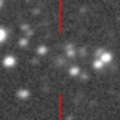
|
Now it is 14.6 mag (Aug. 5, J. L. Virlichie, P. Traverse, H. Roy, G. Houdin). Fading slowly. In the Northern Hemisphere, it will be unobservable in January. In the Southern Hemisphere, it will be getting lower gradually.
Date(TT) R.A. (2000) Decl. Delta r Elong. m1 Best Time(A, h)
Sept.30 18 22.40 -34 2.9 2.786 2.935 88 15.4 19:10 ( 18, 18)
Oct. 7 18 30.77 -34 17.1 2.884 2.942 83 15.5 19:00 ( 20, 18)
|
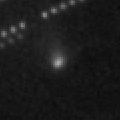
|
It brightened very rapidly. Now it is 15.2 mag (Aug. 23, ATLAS South Africa). It will fade out rapidly after this. It will be fainter than 18 mag in December. In the Northern Hemisphere, it is not observable now, but it will appear in November. In the Southern Hemisphere, it will be unobservable soon.
Date(TT) R.A. (2000) Decl. Delta r Elong. m1 Best Time(A, h)
Sept.30 14 13.67 -19 32.7 2.837 2.057 31 15.4 19:10 ( 70, -5)
Oct. 7 14 18.08 -18 8.3 2.927 2.069 25 15.6 19:00 ( 73, -7)
|

|
It approached to Earth down to 0.29 a.u. in early February, and it brightened up to 4.5 mag (Feb. 1, Juan Jose Gonzalez). Now it is 14.8 mag (Sept. 15, Thomas Lehmann). Fading slowly. In the Northern Hemisphere, it will be unobservable soon. In the Southern Hemisphere, it stays observable in good condition.
Date(TT) R.A. (2000) Decl. Delta r Elong. m1 Best Time(A, h)
Sept.30 6 34.76 -48 12.7 3.619 3.690 86 15.5 4:29 (345, 4)
Oct. 7 6 29.95 -50 39.6 3.648 3.764 88 15.6 4:35 (351, 4)
|

|
It is expected to brighten up to 7 mag, and it will be observable in good condition in winter. Now it is 17.1 mag (Sept. 24, ATLAS-HKO, Haleakala). Brightening rapidly. In the Northern Hemisphere, it stays observable in good condition. It locates somewhat low in the Southern Hemisphere. But it will become high in winter.
Date(TT) R.A. (2000) Decl. Delta r Elong. m1 Best Time(A, h)
Sept.30 6 0.74 21 33.3 1.163 1.613 96 16.1 4:29 (312, 71)
Oct. 7 6 22.07 21 49.1 1.075 1.567 98 15.5 4:35 (319, 73)
|

|
It will approach to Sun down to 0.4 a.u. in late September in 2024, and it is expected to brighten up to 0 mag. Now it is 15.3 mag (Sept. 10, A. Ivanov et al.). Brightening slowly. It will be unobservable soon in the Northern Hemisphere, or in December in the Southern Hemisphere. But it will be observable again in November in the Northern Hemisphere, or in December in the Southern Hemisphere. At the high light, in the Northern Hemisphere, it will be observable in good condition after the perihelion passage. In the Southern Hemisphere, it will be observable in the low sky before and after the perihelion passage.
Date(TT) R.A. (2000) Decl. Delta r Elong. m1 Best Time(A, h)
Sept.30 14 14.04 -1 49.7 6.110 5.244 27 15.6 19:10 ( 84, 5)
Oct. 7 14 16.96 -2 19.6 6.084 5.173 22 15.6 19:00 ( 86, 2)
|

|
David Rankin detected its cometary activity in June. Now it is 15.7 mag (Sept. 24, Ken-ichi Kadota). It stays 16 mag for a while. It stays observable in good condition.
Date(TT) R.A. (2000) Decl. Delta r Elong. m1 Best Time(A, h)
Sept.30 22 5.50 -4 8.9 1.358 2.253 145 15.8 21:30 ( 0, 51)
Oct. 7 22 5.03 -4 15.3 1.386 2.233 138 15.7 21:02 ( 0, 51)
|

|
It is expected to brighten up to 14.5 mag in winter. Now it is 16.4 mag (Sept. 15, Masayoshi Yoshimi). Brightening slowly. It stays observable in good condition.
Date(TT) R.A. (2000) Decl. Delta r Elong. m1 Best Time(A, h)
Sept.30 3 32.42 15 1.9 1.897 2.670 131 16.0 3:00 ( 0, 70)
Oct. 7 3 32.04 15 16.9 1.800 2.634 138 15.8 2:32 ( 0, 70)
|

|
Now it is 14.8 mag (Sept. 16, Taras Prystavski). Fading slowly. It stays observable in good condition.
Date(TT) R.A. (2000) Decl. Delta r Elong. m1 Best Time(A, h)
Sept.30 0 25.38 -7 57.9 2.688 3.678 169 15.9 23:49 ( 0, 47)
Oct. 7 0 20.77 -8 15.5 2.719 3.693 164 16.0 23:17 ( 0, 47)
|
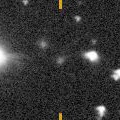
|
It is expected to brighten up to 14 mag in 2024 summer. At the high light, it is not observable in the Northern Hemisphere. Now it is 16.6 mag (Sept. 26, Catalina Sky Survey). It stays 16 mag for a while. In the Northern Hemisphere, it will be getting lower gradually. In the Southern Hemisphere, it stays observable in good condition.
Date(TT) R.A. (2000) Decl. Delta r Elong. m1 Best Time(A, h)
Sept.30 3 21.66 -7 40.7 3.249 4.013 134 16.1 2:50 ( 0, 47)
Oct. 7 3 16.61 -9 59.6 3.147 3.966 140 16.0 2:17 ( 0, 45)
|
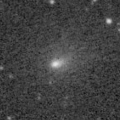
|
Now it is 16.7 mag (Sept. 5, Thomas Lehmann). Fading rapidly. It will be fainter than 18 mag in November. It locates somewhat low in the Northern Hemisphere. In the Southern Hemisphere, it will be getting lower gradually.
Date(TT) R.A. (2000) Decl. Delta r Elong. m1 Best Time(A, h)
Sept.30 18 50.45 -25 12.8 1.611 1.971 95 16.0 19:10 ( 14, 28)
Oct. 7 18 52.81 -28 9.6 1.801 2.037 88 16.4 19:00 ( 17, 25)
|
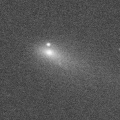
|
It brightened up to 12.8 mag in spring (Mar. 8, Taras Prystavski). Now it is 16.1 mag (Sept. 13, Ken-ichi Kadota). It will fade out rapidly after this. It will be fainter than 18 mag in November. It stays observable in good condition.
Date(TT) R.A. (2000) Decl. Delta r Elong. m1 Best Time(A, h)
Sept.30 1 6.23 -5 20.5 1.652 2.637 166 16.2 0:35 ( 0, 50)
Oct. 7 0 59.17 -5 42.9 1.687 2.675 168 16.3 0:00 ( 0, 49)
|
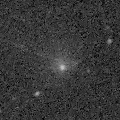
|
Very large comet. It is expected to brighten up to 13 mag in 2031. Now it is 15.8 mag (Sept. 11, Taras Prystavski). It stays 16 mag for a while. In the Northern Hemisphere, it is not observable now. In the Southern Hemisphere, it stays observable in good condition. In the Northern Hemisphere, it is not observable until 2030.
Date(TT) R.A. (2000) Decl. Delta r Elong. m1 Best Time(A, h)
Sept.30 3 30.24 -64 21.1 16.893 17.177 104 16.2 2:57 ( 0, -9)
Oct. 7 3 28.36 -64 43.4 16.881 17.153 104 16.2 2:28 ( 0,-10)
|
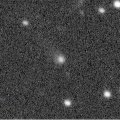
|
Now it is 16.5 mag (Apr. 10, Michael Jager). It stays 16 mag for a while. In the Northern Hemisphere, it is not observable now, but it will be observable soon. In the Southern Hemisphere, it stays observable in good condition.
Date(TT) R.A. (2000) Decl. Delta r Elong. m1 Best Time(A, h)
Sept.30 9 29.97 -34 2.8 4.249 3.703 51 16.3 4:29 (310, -3)
Oct. 7 9 33.46 -36 22.4 4.196 3.704 54 16.3 4:35 (316, 0)
|

|
Now it is 16.2 mag (Sept. 13, ATLAS South Africa). Fading slowly. It will be fainter than 18 mag in December. It locates somewhat low in the Northern Hemisphere. In the Southern Hemisphere, it will be getting lower gradually after this, and it will be unobservable in December.
Date(TT) R.A. (2000) Decl. Delta r Elong. m1 Best Time(A, h)
Sept.30 17 42.27 -21 43.9 2.948 2.938 79 16.4 19:10 ( 32, 26)
Oct. 7 17 50.59 -21 53.1 3.081 2.977 74 16.6 19:00 ( 34, 25)
|

|
It is expected to brighten up to 15 mag from autumn to winter. Now it is 17.4 mag (Sept. 16, ATLAS Chile). Brightening slowly. In the Northern Hemisphere, it is not observable now, but it will be observable soon. In the Southern Hemisphere, it stays observable in good condition.
Date(TT) R.A. (2000) Decl. Delta r Elong. m1 Best Time(A, h)
Sept.30 2 24.17 -58 56.6 1.316 1.952 114 16.7 1:52 ( 0, -4)
Oct. 7 2 7.23 -58 16.5 1.283 1.927 114 16.5 1:08 ( 0, -3)
|
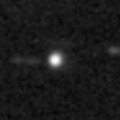
|
Now it is 16.6 mag (Sept. 18, Ken-ichi Kadota). Fading slowly. It will be fainter than 18 mag in January. It stays observable in good condition. It was very faint as 21.5 mag in 2021. It seems to be bright temporarily in outburst.
Date(TT) R.A. (2000) Decl. Delta r Elong. m1 Best Time(A, h)
Sept.30 21 6.91 -11 58.4 3.863 4.562 129 16.6 20:32 ( 0, 43)
Oct. 7 21 6.41 -12 0.7 3.965 4.576 122 16.6 20:04 ( 0, 43)
|

|
Very far object. Now it is 16.7 mag (Sept. 15, J. L. Virlichie, P. Traverse, H. Roy). It stays 17 mag for a while. In the Northern Hemisphere, it is not observable now. In the Southern Hemisphere, it stays observable in good condition.
Date(TT) R.A. (2000) Decl. Delta r Elong. m1 Best Time(A, h)
Sept.30 5 33.82 -74 33.9 10.252 10.316 90 16.8 4:29 (358,-20)
Oct. 7 5 26.22 -75 13.6 10.265 10.315 90 16.8 4:24 ( 0,-20)
|
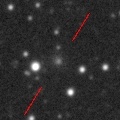
|
Now it is 17.0 mag (Sept. 16, Jean-Claude Merlin). It stays 17 mag for a while. In the Southern Hemisphere, it will be getting lower gradually after this, and it will be unobservable in December.
Date(TT) R.A. (2000) Decl. Delta r Elong. m1 Best Time(A, h)
Sept.30 18 11.54 -12 11.8 2.371 2.520 86 16.8 19:10 ( 29, 38)
Oct. 7 18 19.90 -12 22.3 2.440 2.505 81 16.8 19:00 ( 32, 37)
|
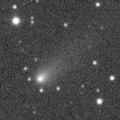
|
Now it is 16.3 mag (Sept. 22, ATLAS South Africa). Fading slowly. It will be fainter than 18 mag in November. In the Northern Hemisphere, it will never be observable after this. In the Southern Hemisphere, it will be getting lower gradually.
Date(TT) R.A. (2000) Decl. Delta r Elong. m1 Best Time(A, h)
Sept.30 15 42.42 -39 57.6 3.000 2.621 58 16.8 19:10 ( 42, -3)
Oct. 7 15 57.23 -40 25.5 3.084 2.640 54 17.0 19:00 ( 42, -4)
|
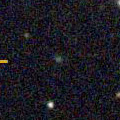
|
Now it is 17.2 mag (Sept. 26, ATLAS-HKO, Haleakala). It stays 17 mag for a while. In the Northern Hemisphere, it stays observable in good condition. It stays extremely low in the Southern Hemisphere.
Date(TT) R.A. (2000) Decl. Delta r Elong. m1 Best Time(A, h)
Sept.30 5 1.56 39 37.6 6.353 6.718 107 16.9 4:29 (181, 85)
Oct. 7 5 2.27 39 59.3 6.252 6.714 113 16.9 4:03 (180, 85)
|
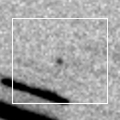
|
It is expected to brighten up to 8.5 mag from January to February. Now it is 19.1 mag (Sept. 26, P. Carson). Brightening rapidly. It stays observable in good condition.
Date(TT) R.A. (2000) Decl. Delta r Elong. m1 Best Time(A, h)
Sept.30 2 57.88 21 14.5 1.041 1.907 137 17.4 2:26 ( 0, 76)
Oct. 7 3 0.76 21 22.6 0.955 1.859 144 16.9 2:01 ( 0, 76)
|

|
It brightened up to 14.1 mag in 2022 spring (Mar. 22, 2022, Chris Wyatt). It was expected to brighten up to 13 mag. But actually, it was fainter than originally expected. Now it is 16.1 mag (Sept. 26, ATLAS Chile). Fading slowly. It will be fainter than 18 mag in January. It stays observable in good condition.
Date(TT) R.A. (2000) Decl. Delta r Elong. m1 Best Time(A, h)
Sept.30 2 31.59 -2 39.5 4.441 5.312 147 16.9 2:00 ( 0, 52)
Oct. 7 2 24.67 -2 39.8 4.439 5.360 154 16.9 1:25 ( 0, 52)
|

|
Now it is 16.6 mag (Sept. 26, ATLAS Chile). It stays 17 mag for a while. It stays observable in good condition.
Date(TT) R.A. (2000) Decl. Delta r Elong. m1 Best Time(A, h)
Sept.30 4 59.23 -11 9.9 7.069 7.471 109 17.0 4:27 ( 0, 44)
Oct. 7 4 59.21 -11 28.7 6.954 7.439 115 16.9 3:59 ( 0, 44)
|
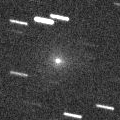
|
It was expected to brighten up to 11 mag in July. But actually, it was fainter than originally expected. Now it is 18.5 mag (Sept. 25, W. Hasubick). Fading rapidly. It will be fainter than 18 mag soon. In the Northern Hemisphere, it will be getting higher gradually. It locates somewhat low in the Southern Hemisphere.
Date(TT) R.A. (2000) Decl. Delta r Elong. m1 Best Time(A, h)
Sept.30 9 38.28 3 41.1 2.027 1.441 41 17.0 4:29 (279, 19)
Oct. 7 9 53.54 1 55.0 2.053 1.507 44 17.5 4:35 (284, 22)
|
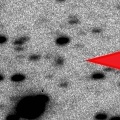
|
Now it is 17.7 mag (Sept. 14, Jean-Claude Merlin). It stays 17 mag for a while. It will be unobservable soon in the Northern Hemisphere, or in November in the Southern Hemisphere. But it will be observable again in December in the Southern Hemisphere. It stays 16 mag in the Southern sky for a long time from 2024 to 2025.
Date(TT) R.A. (2000) Decl. Delta r Elong. m1 Best Time(A, h)
Sept.30 16 23.20 -39 34.7 6.693 6.347 65 17.2 19:10 ( 36, 2)
Oct. 7 16 23.31 -39 32.3 6.771 6.318 59 17.2 19:00 ( 39, 0)
|

|
It brightened up to 13.4 mag in last summer (July 7, 2022, Giuseppe Pappa). Now it is 17.4 mag (Sept. 7, Thomas Lehmann). It stays 18 mag for a while. It locates somewhat low in the Northern Hemisphere. But it will become high in winter. In the Southern Hemisphere, it will never be observable after this.
Date(TT) R.A. (2000) Decl. Delta r Elong. m1 Best Time(A, h)
Sept.30 15 26.37 29 32.5 5.178 4.664 54 17.3 19:10 (103, 36)
Oct. 7 15 29.29 29 19.9 5.264 4.712 51 17.4 19:00 (105, 33)
|
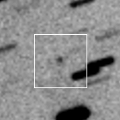
|
Now it is 17.2 mag (Sept. 24, D. Husar, K. Meo, J. Jahn). It stays 17 mag for a while. In the Northern Hemisphere, it stays observable in good condition. In the Southern Hemisphere, it is not observable now, but it will appear in November.
Date(TT) R.A. (2000) Decl. Delta r Elong. m1 Best Time(A, h)
Sept.30 1 20.11 58 23.9 3.831 4.457 122 17.4 0:50 (180, 66)
Oct. 7 0 58.62 58 27.5 3.767 4.438 126 17.4 23:54 (180, 66)
|

|
Now it is 17.6 mag (Sept. 26, ATLAS-HKO, Haleakala). It stays 17 mag for a while. In the Northern Hemisphere, it stays observable in good condition. It stays extremely low in the Southern Hemisphere.
Date(TT) R.A. (2000) Decl. Delta r Elong. m1 Best Time(A, h)
Sept.30 5 8.59 39 7.8 5.006 5.368 105 17.4 4:29 (199, 86)
Oct. 7 5 9.75 39 4.3 4.885 5.345 112 17.4 4:10 (180, 86)
|

|
Now it is 17.0 mag (Sept. 26, ATLAS Chile). It stays 18 mag for a while. It stays observable in good condition.
Date(TT) R.A. (2000) Decl. Delta r Elong. m1 Best Time(A, h)
Sept.30 3 59.18 7 16.5 2.360 3.058 125 17.4 3:27 ( 0, 62)
Oct. 7 3 58.75 6 48.7 2.302 3.069 132 17.4 2:59 ( 0, 62)
|
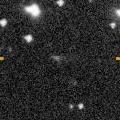
|
First return of a new periodic comet which brightened up to 15 mag in 2008. Now it is 18.8 mag (Sept. 23, A. Diepvens). Fading gradually. It will be fainter than 18 mag in November. It stays observable in good condition.
Date(TT) R.A. (2000) Decl. Delta r Elong. m1 Best Time(A, h)
Sept.30 4 8.86 16 31.2 1.959 2.639 122 17.5 3:37 ( 0, 72)
Oct. 7 4 9.25 15 13.2 1.915 2.667 129 17.6 3:10 ( 0, 70)
|

|
Now it is 17.5 mag (Sept. 7, P.-J. Dekelver). It stays 18 mag for a while. In the Northern Hemisphere, it will be getting lower gradually. It stays extremely low in the Southern Hemisphere.
Date(TT) R.A. (2000) Decl. Delta r Elong. m1 Best Time(A, h)
Sept.30 15 43.79 22 49.1 3.413 2.955 55 17.8 19:10 ( 94, 37)
Oct. 7 15 55.93 20 59.3 3.464 2.970 52 17.9 19:00 ( 92, 35)
|

|
It brightened up to 14 mag from 2020 to 2021. Now it is 17.9 mag (Aug. 24, W. Hasubick). It stays 18 mag for a while. It stays observable in good condition.
Date(TT) R.A. (2000) Decl. Delta r Elong. m1 Best Time(A, h)
Sept.30 3 4.50 3 47.1 3.933 4.742 139 17.9 2:32 ( 0, 59)
Oct. 7 3 1.50 3 30.8 3.885 4.753 146 17.9 2:02 ( 0, 59)
|

|
It returned for the first time in 68 years. It will brighten up to 7.5 mag in 2024 summer. Now it is 19.8 mag (Sept. 27, J. Nicolas, F. Kugel). It will brighten rapidly after this. It stays observable in good condition. At the high light, it locates low in the Northern Hemisphere, or it is not observable in the Southern Hemisphere.
Date(TT) R.A. (2000) Decl. Delta r Elong. m1 Best Time(A, h)
Sept.30 4 27.78 -18 2.4 3.102 3.659 116 19.4 3:55 ( 0, 37)
Oct. 7 4 26.36 -18 44.7 2.969 3.591 121 19.1 3:26 ( 0, 36)
|
|
![]()
 C/2019 U5 ( PanSTARRS )
C/2019 U5 ( PanSTARRS ) C/2022 A2 ( PanSTARRS )
C/2022 A2 ( PanSTARRS ) 12P/Pons-Brooks
12P/Pons-Brooks C/2022 JK5 ( PanSTARRS )
C/2022 JK5 ( PanSTARRS ) C/2019 L3 ( ATLAS )
C/2019 L3 ( ATLAS ) C/2021 X1 ( Maury-Attard )
C/2021 X1 ( Maury-Attard ) C/2020 K1 ( PanSTARRS )
C/2020 K1 ( PanSTARRS ) 29P/Schwassmann-Wachmann 1
29P/Schwassmann-Wachmann 1 126P/IRAS
126P/IRAS C/2022 E2 ( ATLAS )
C/2022 E2 ( ATLAS ) C/2019 T4 ( ATLAS )
C/2019 T4 ( ATLAS ) C/2022 L2 ( ATLAS )
C/2022 L2 ( ATLAS ) C/2021 G2 ( ATLAS )
C/2021 G2 ( ATLAS ) 237P/LINEAR
237P/LINEAR (3200) Phaethon
(3200) Phaethon C/2021 Y1 ( ATLAS )
C/2021 Y1 ( ATLAS ) 213P/Van Ness
213P/Van Ness 199P/Shoemaker 4
199P/Shoemaker 4 C/2023 K1 ( ATLAS )
C/2023 K1 ( ATLAS ) C/2022 E3 ( ZTF )
C/2022 E3 ( ZTF ) 62P/Tsuchinshan 1
62P/Tsuchinshan 1 C/2023 A3 ( Tsuchinshan-ATLAS )
C/2023 A3 ( Tsuchinshan-ATLAS ) P/2023 KF3
P/2023 KF3 32P/Comas Sola
32P/Comas Sola 117P/Helin-Roman-Alu 1
117P/Helin-Roman-Alu 1 C/2022 S4 ( Lemmon )
C/2022 S4 ( Lemmon ) C/2022 W3 ( Leonard )
C/2022 W3 ( Leonard ) 71P/Clark
71P/Clark C/2014 UN271 ( Bernardinelli-Bernstein )
C/2014 UN271 ( Bernardinelli-Bernstein ) C/2022 A3 ( Lemmon-ATLAS )
C/2022 A3 ( Lemmon-ATLAS ) 81P/Wild 2
81P/Wild 2 226P/Pigott-LINEAR-Kowalski
226P/Pigott-LINEAR-Kowalski P/2023 M4 ( ATLAS )
P/2023 M4 ( ATLAS ) C/2019 E3 ( ATLAS )
C/2019 E3 ( ATLAS ) 219P/LINEAR
219P/LINEAR 77P/Longmore
77P/Longmore C/2021 S4 ( Tsuchinshan )
C/2021 S4 ( Tsuchinshan ) 144P/Kushida
144P/Kushida C/2020 Y2 ( ATLAS )
C/2020 Y2 ( ATLAS ) C/2022 QE78 ( ATLAS )
C/2022 QE78 ( ATLAS ) 185P/Petriew
185P/Petriew C/2023 F3 ( ATLAS )
C/2023 F3 ( ATLAS ) C/2020 R7 ( ATLAS )
C/2020 R7 ( ATLAS ) C/2022 U1 ( Leonard )
C/2022 U1 ( Leonard ) C/2022 U3 ( Bok )
C/2022 U3 ( Bok ) 170P/Christensen
170P/Christensen 465P/2023 L1 ( Hill )
465P/2023 L1 ( Hill ) C/2022 U4 ( Bok )
C/2022 U4 ( Bok ) 246P/NEAT
246P/NEAT 13P/Olbers
13P/Olbers![]()






















































